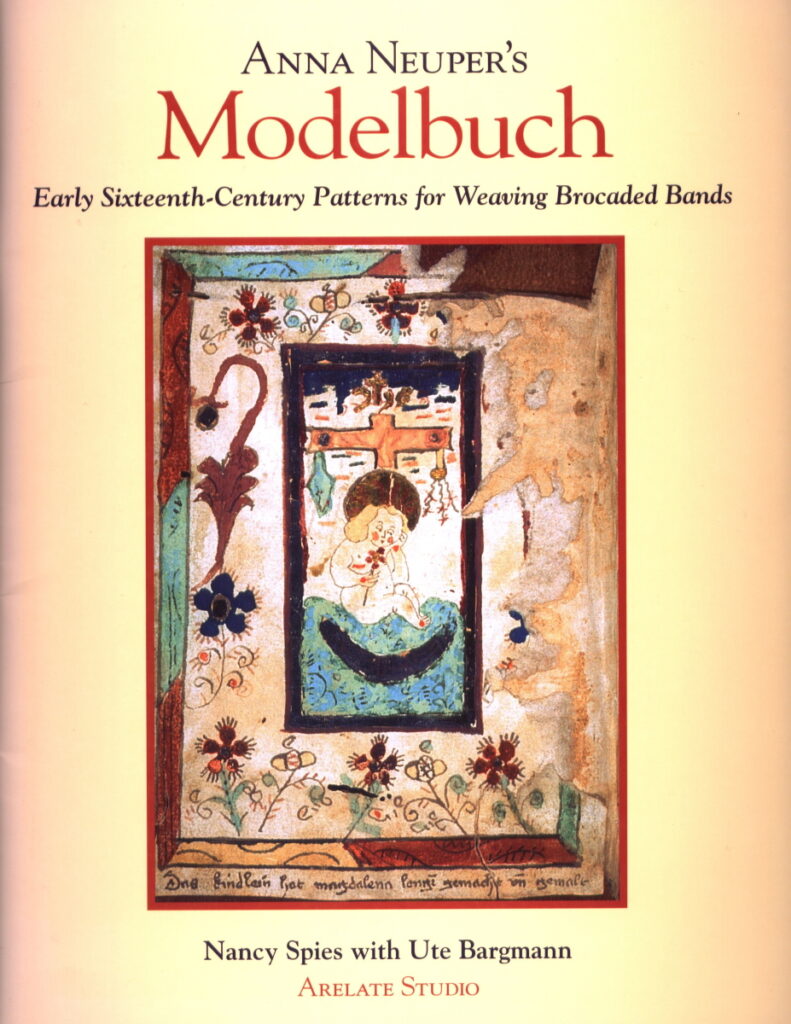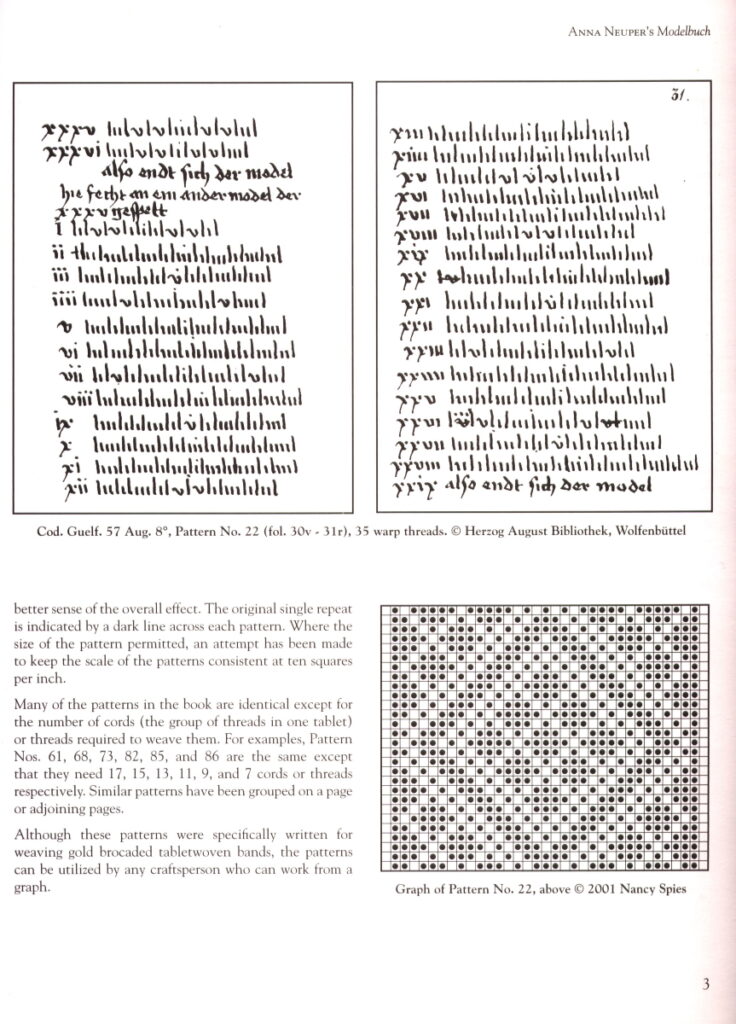Arelate Studio, 2003
ISBN 0-9718960-1-1
The original of this book is bound in leather, measures 17.5 by 14 centimeters, and is located in the German town of Wolfenbüttel, in Herzog August Library. The book arrived there already in 1525 from the Nuremberg monastery of St. Clare. Handwritten in 1517, this book is one of the earliest surviving collections of textile patterns, and is 6 years older than the first printed pattern collection.
Yes, I’m still talking about the book printed in 2003 – as it is a re-worked version of a pattern book put together by an elderly nun at the beginning of the 16th century. Of the 56 pages of paperback edition, the introductory text is only 5 pages long, the rest is taken up by brocade patterns, often several per page. A real treasury trove for those fond of historical tablet weaving!
Does it make you wonder how much work has gone into this book, and how easy it is to weave from it? One might think all the authors have done was write a short introduction and arrange the patterns on pages. If this was the case, the book would have been unusable as a pattern book and would be of interest for those into calligraphy instead, as the way of writing down weaving patterns used in 16th century is quite different from what we tend to use now.
The original leather-bound book was probably found by Nancy Spies while working on Ecclesiastical Pomp and Aristocratic Circumstance. The collection was too much of a treasure to just mention it or may be use 1-2 patterns among others. So Nancy returned to it after the previous book had been published, and spent several years re-working the patterns in collaboration with Ute Bargmann.
87 patterns were originally written down row by row as a sequence short and long vertical lines: the short lines represent the tablets or warp from the tablets that brocade weft goes on top of, and the long lines represent the tablets/warp that brocade weft doesn’t cover. Five identical lines in a row are replaced by a “V”. No wonder there were multiple errors, duplicate or missing rows in the patterns, as this way of marking down the pattern diagram doesn’t have any visual resemblance to how the weaving is going to look like. Redrawing and editing such patterns requires quite a bit of time and patience. The result was certainly worth the effort though.
In addition to redrawing, Nancy and Ute sorted the patterns by type and width in tablets. While some patterns in the collection are unique, there are also sets of patterns with same elements but different width.
There isn’t really much more to say about this book. A beautiful, well re-worked collection of historical patterns that are made easy to weave. Happy weaving!

